Ever seen a cheetah bolt across the savannah like a lightning bolt? It’s pretty mind-blowing, right? But have you ever stopped to think, “How on earth do they do that?” They are the Ferraris of the animal kingdom! They can reach impressive velocities that leave other creatures in the dust. Let’s dive into the world of these magnificent big cats and discover the secrets behind how cheetahs run so fast!
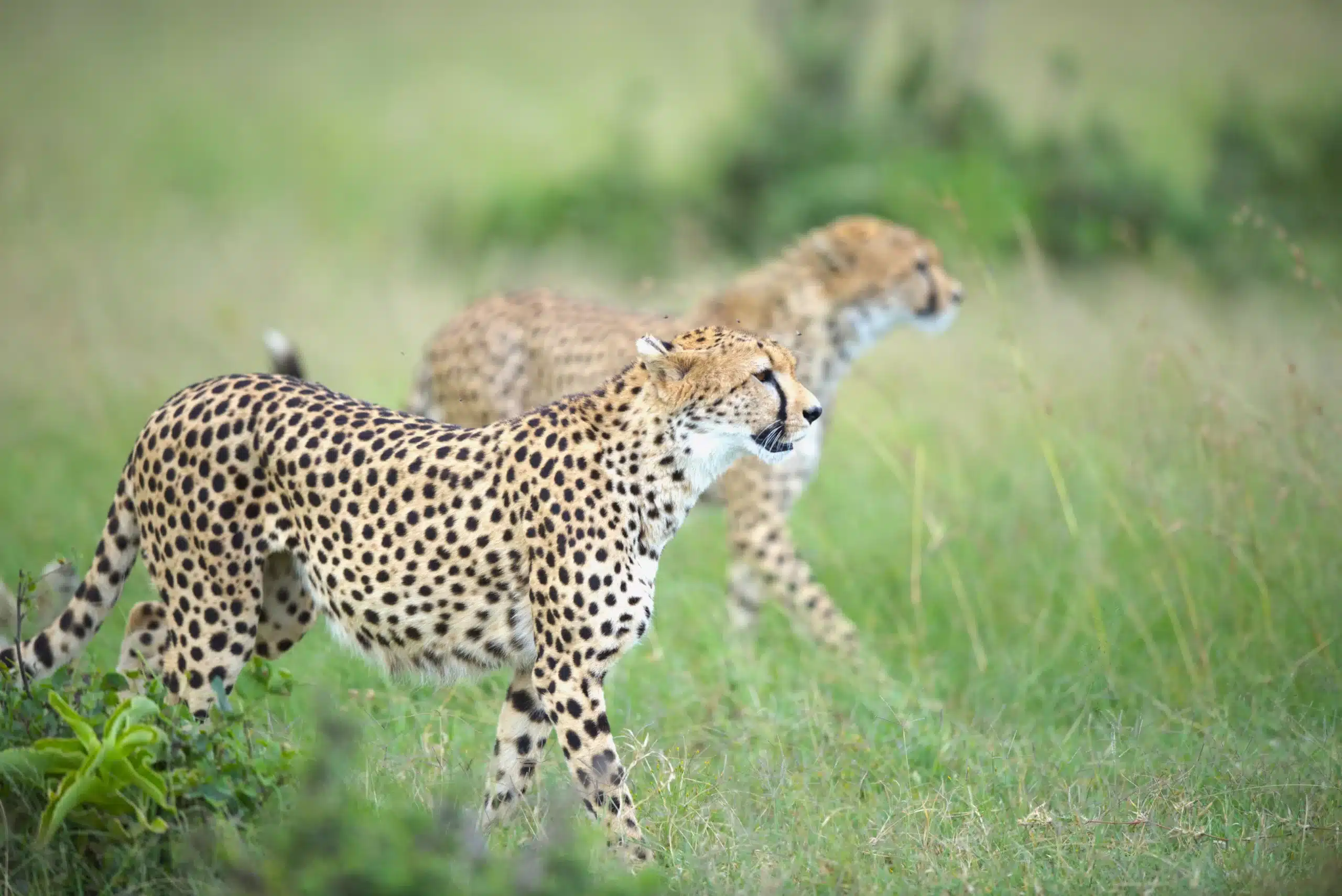
If you have ever wanted to witness the incredible speed of cheetahs firsthand, then you shouldn’t miss our cheetah safaris. where you can experience the thrill of seeing these magnificent creatures in action up close!
Anatomy of a Cheetah
To understand how cheetahs achieve such incredible speeds, we need to first know about their anatomy.
- Their sleek, streamlined bodies are built for speed, with long, muscular limbs, and a flexible spine designed for explosive acceleration.
- With flexible spines and lightweight bones, they possess the maximum agility and efficiency needed to navigate their environment with unmatched grace and precision.
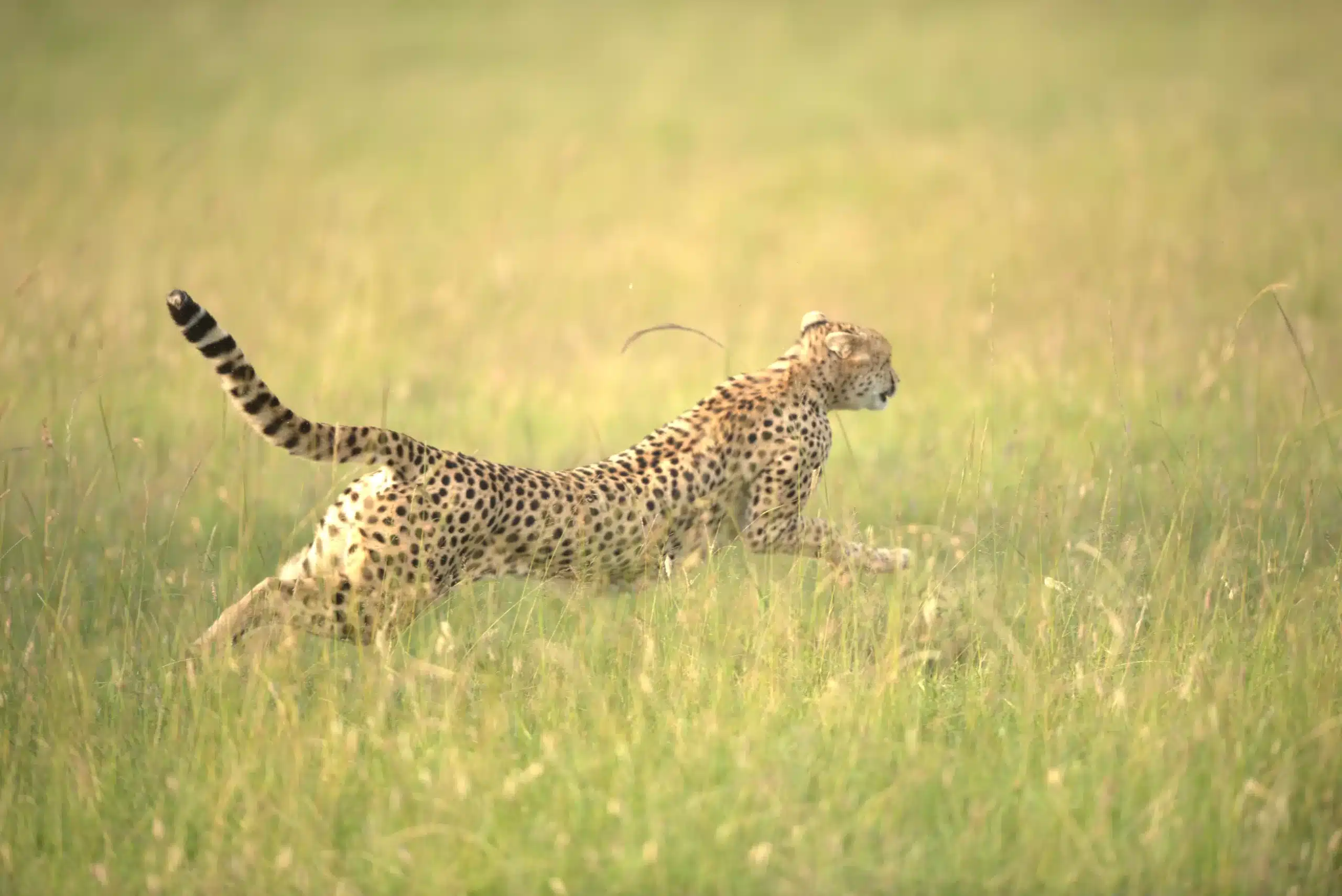
These adaptations not only allow cheetahs to move fast but also play a crucial role in minimizing energy expenditure during high-speed pursuits.
Muscles Used in Running
Cheetahs rely on powerful hind legs and foreleg muscles for explosive acceleration.
- Their hind leg muscles are muscular powerhouses, generating the force needed to launch them into action.
- While their foreleg muscles provide additional support and stability.
- These muscles, combined with well-developed shoulders and chest muscles, provide the stability and control required to maintain their speed during high-speed pursuits.
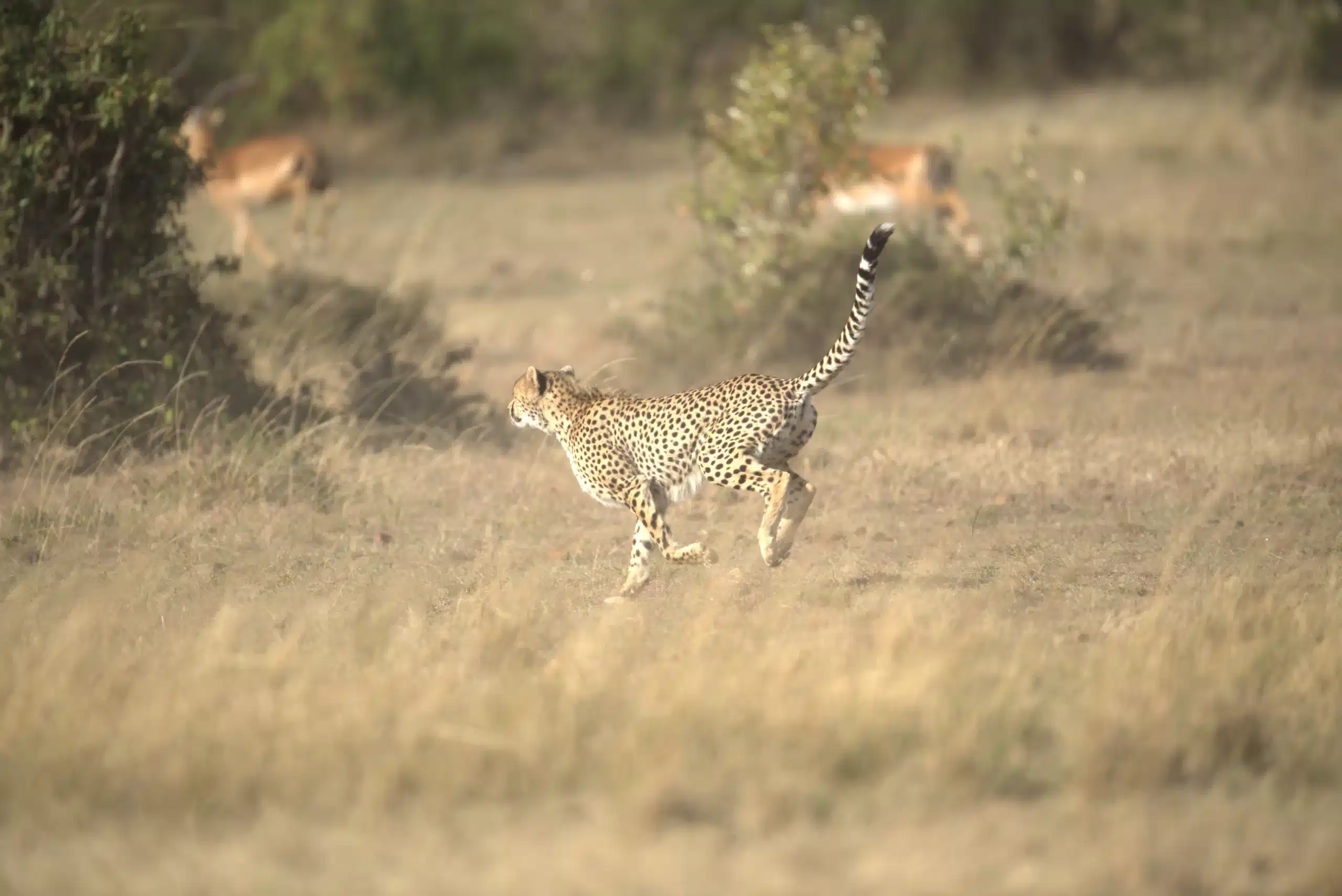
Cheetahs possess a high concentration of fast-twitch muscle fibres, up to 20% more than other fast animals like horses. These muscles give cheetahs a quick boost of energy, but they can only keep it up for a short time if they don’t have enough oxygen. So, they can sprint like a race car, but they need breaks to catch their breath.
Skeletal Structure Adaptations
What sets cheetahs apart from other big cats is their unique skeletal structure. Lightweight bones and a flexible spine act like springs, maximising energy transfer with each stride. Their lengthy limbs and highly flexible joints allow them to take longer strides and a greater range of motion, minimizing ground contact time and maximizing speed and efficiency.
Cheetahs possess special bones that enable them to run fast and capture their prey easily. Here’s how their skeleton is designed for speed and agility:
- Slim and light bones: Cheetah’s have lightweight bones all over their bodies, which makes it easier for them to run quickly without using too much energy.
- Different front and back legs: Cheetah’s legs work differently than other cats. Their front legs are longer and more flexible, which helps them grab their prey during a chase. Their back legs are powerful and sturdy, which gives them the push needed to move them forward at lightning speeds.
- Special paw movement: Unlike other cats, cheetahs can move their paws up and down more, and this movement is called “supination” which helps them to grab onto prey with their front claws.
With these amazing skeletal adaptations, cheetahs are known to be the ultimate sprinters and hunters in the animal world.
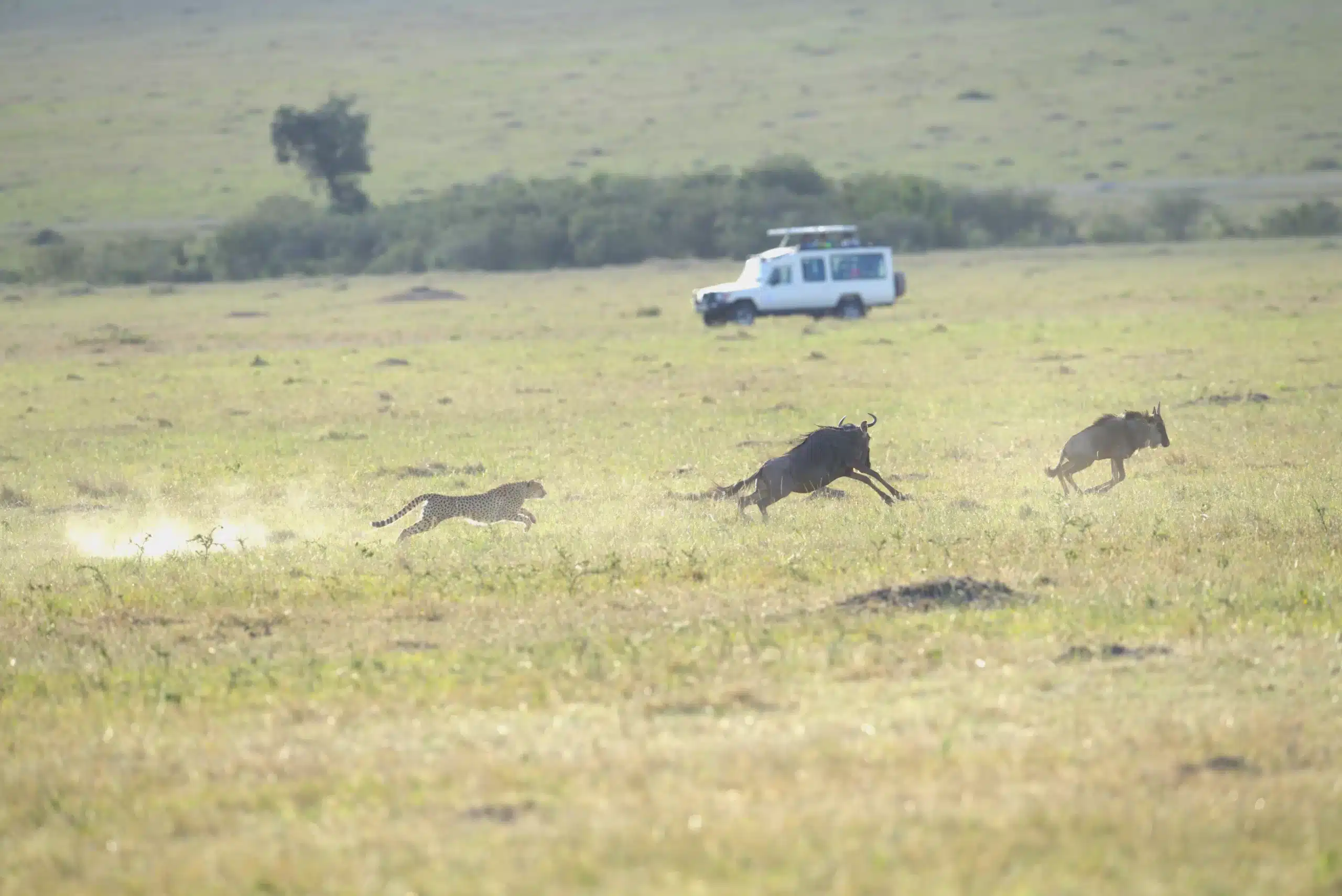
Limb Length and Flexibility
For the incredible speed of cheetahs, longer limbs and flexible joints are important because they enable them to cover more ground with each stride. Minimizing the time spent on the ground and maximizing their speed.
- The length of a cheetah’s legs relative to its body size is unique and different among big cats, allowing for greater stride length and speed.
- Flexible joints, particularly in the shoulder and hip regions, enable cheetahs to extend their limbs fully during each stride, maximizing their ability to push themselves forward.
- The range of motion in a cheetah’s spine allows for efficient weight transfer and balance adjustments during high-speed moves.
Speed Generated by Muscle Power
The absolute power generated by a cheetah’s muscles is awe-inspiring. With explosive bursts of energy, they can accelerate from 0 to 60 miles per hour in just a few seconds, which undoubtedly makes them the fastest land animals on the planet. It’s a testament to the incredible strength and efficiency of their muscular system.
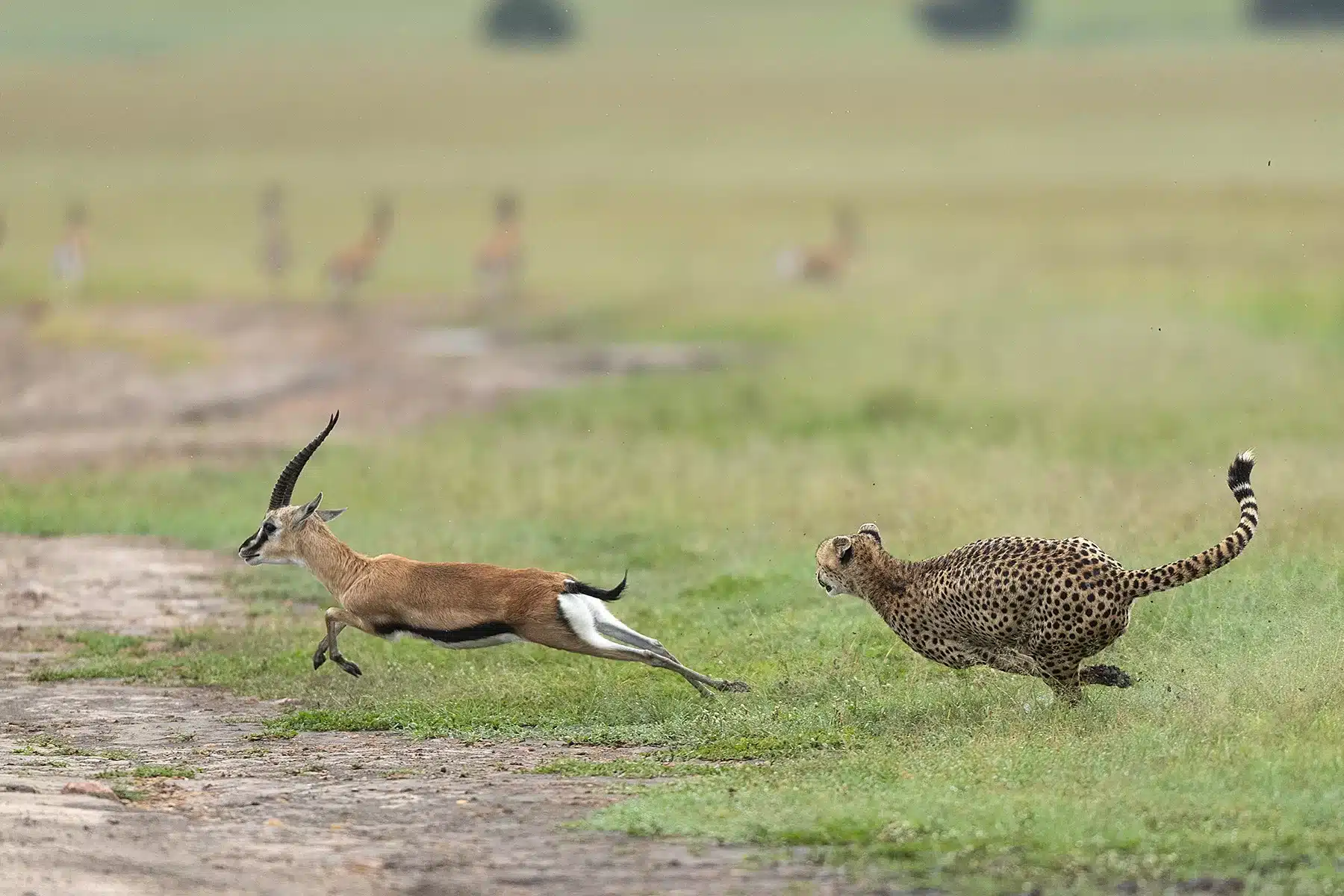
During a sprint, cheetahs can take up to three strides per second, achieving ground contact times as short as 0.1 seconds, allowing for rapid acceleration and deceleration.
Role of Tendons in Energy Storage
In a cheetah’s speed, tendons play a crucial role; they act as elastic springs that store and release energy with each step. This energy-efficient mechanism allows cheetahs to maintain an incredible speed over long distances without getting tired. With every leap, cheetahs utilize the power of their tendons to push themselves forward with astonishing speed and efficiency.
Hunting Techniques of Cheetahs
Cheetahs are serious pros when it comes to running and catching their meal, and they have some pretty cool techniques up their sleeves.
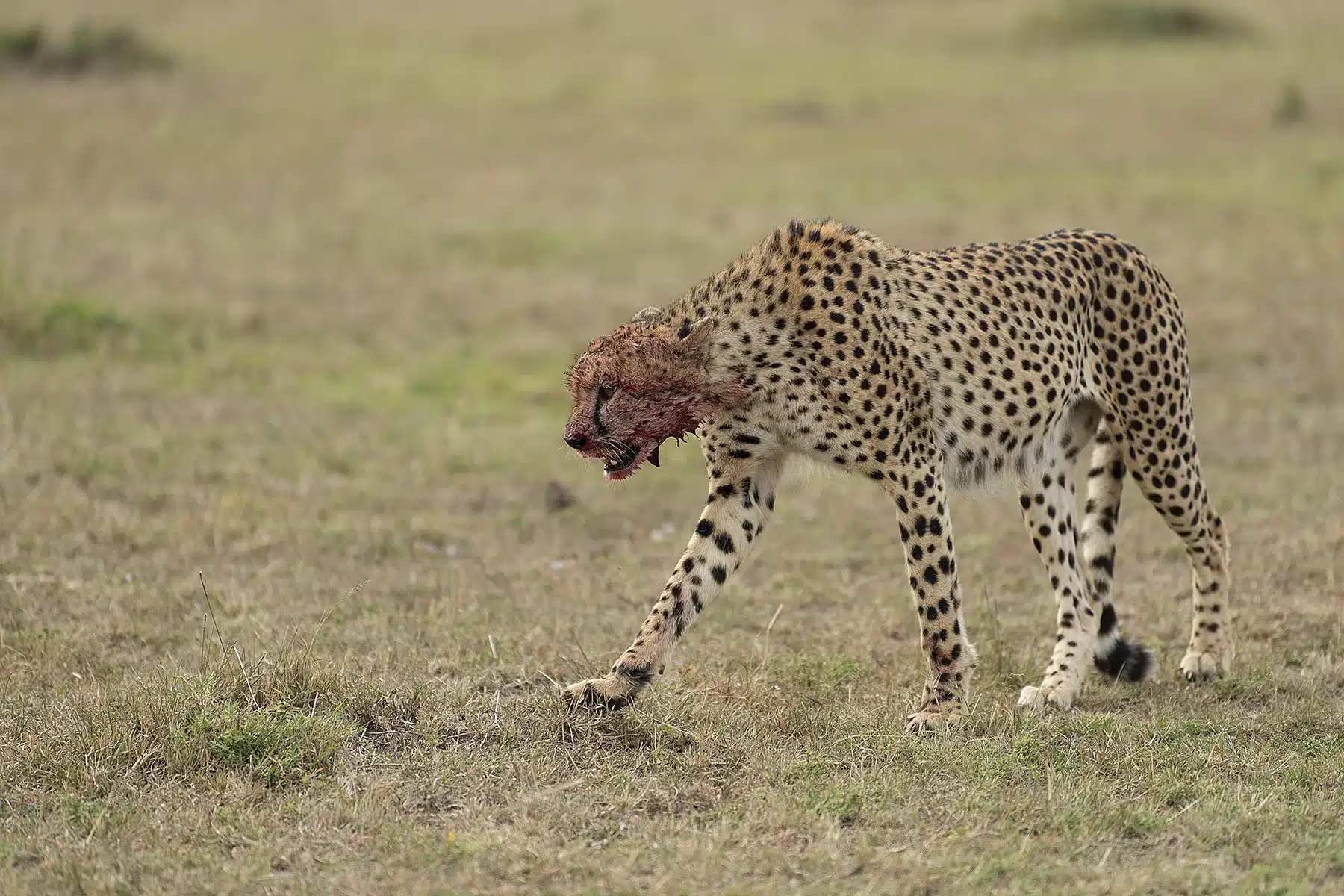
These cats are masterful hunters, using a combination of speed, stealth, and strategy to catch their prey. Let’s dive deeper into their hunting techniques and explore how they manage to catch their prey with such precision.
Sprinting vs Endurance Hunting
While cheetahs are famous for their sprints, they also utilize endurance hunting when the situation calls for it. Sprinting is their go-to strategy for chasing down prey like gazelles or impalas. With their unique acceleration, they can reach speeds of up to 60 miles per hour in just a few seconds, closing the gap between themselves and their target in the blink of an eye.
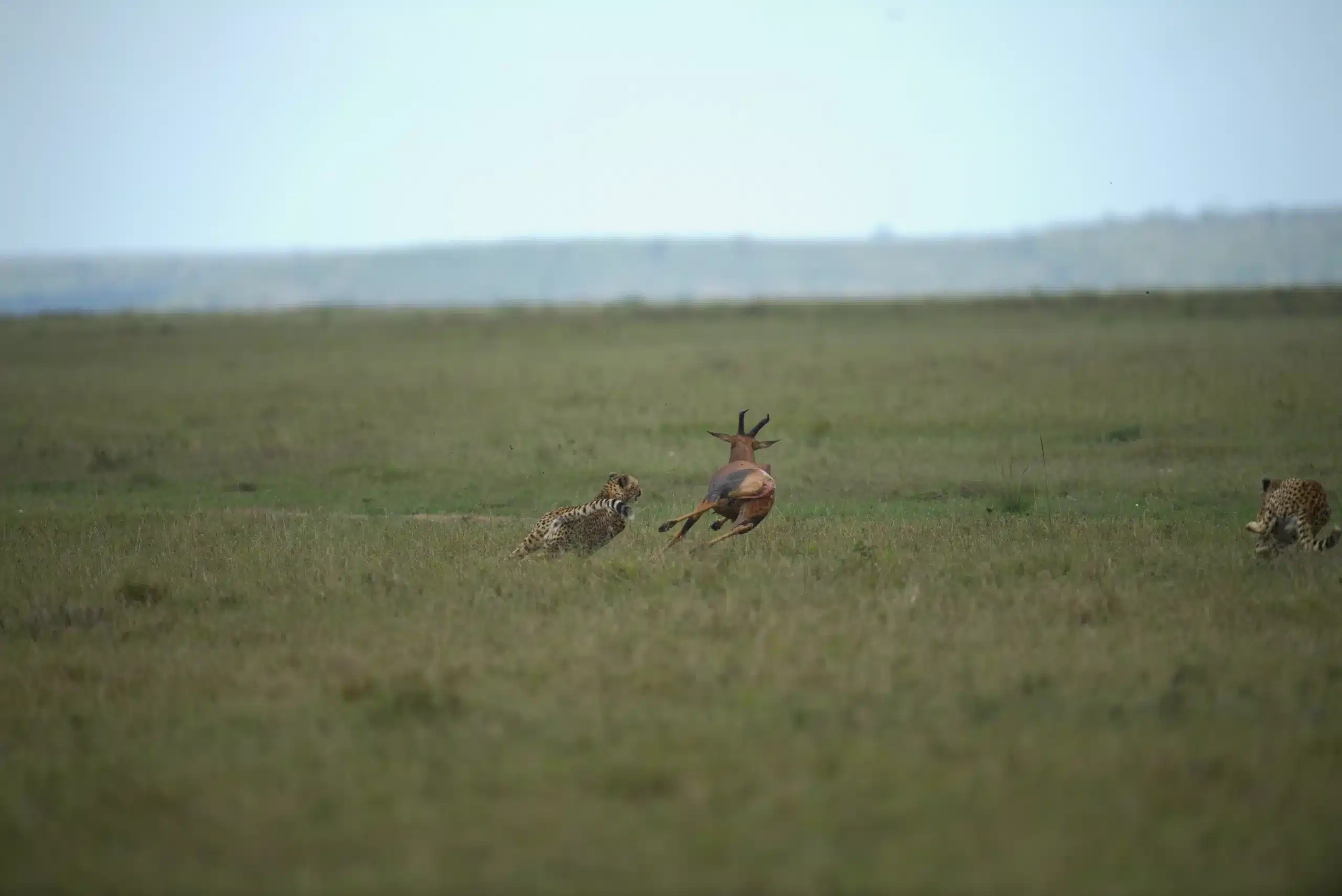
On the other hand, endurance hunting comes into play when the prey is more elusive or the chase lasts longer. Cheetahs possess remarkable stamina and can maintain a fast speed over long distances. They use this endurance to wear down their prey, gradually closing in until they can make a decisive final sprint to capture it.
Chase Strategies
Witnessing things such as cheetah hunting here in the wild is something extremely special. These apex predators are masters of deception and calculation, using every advantage at their disposal to secure a successful kill. They carefully study their surroundings, analyzing the savannah and the behavior of their prey, to formulate the perfect plan of attack.
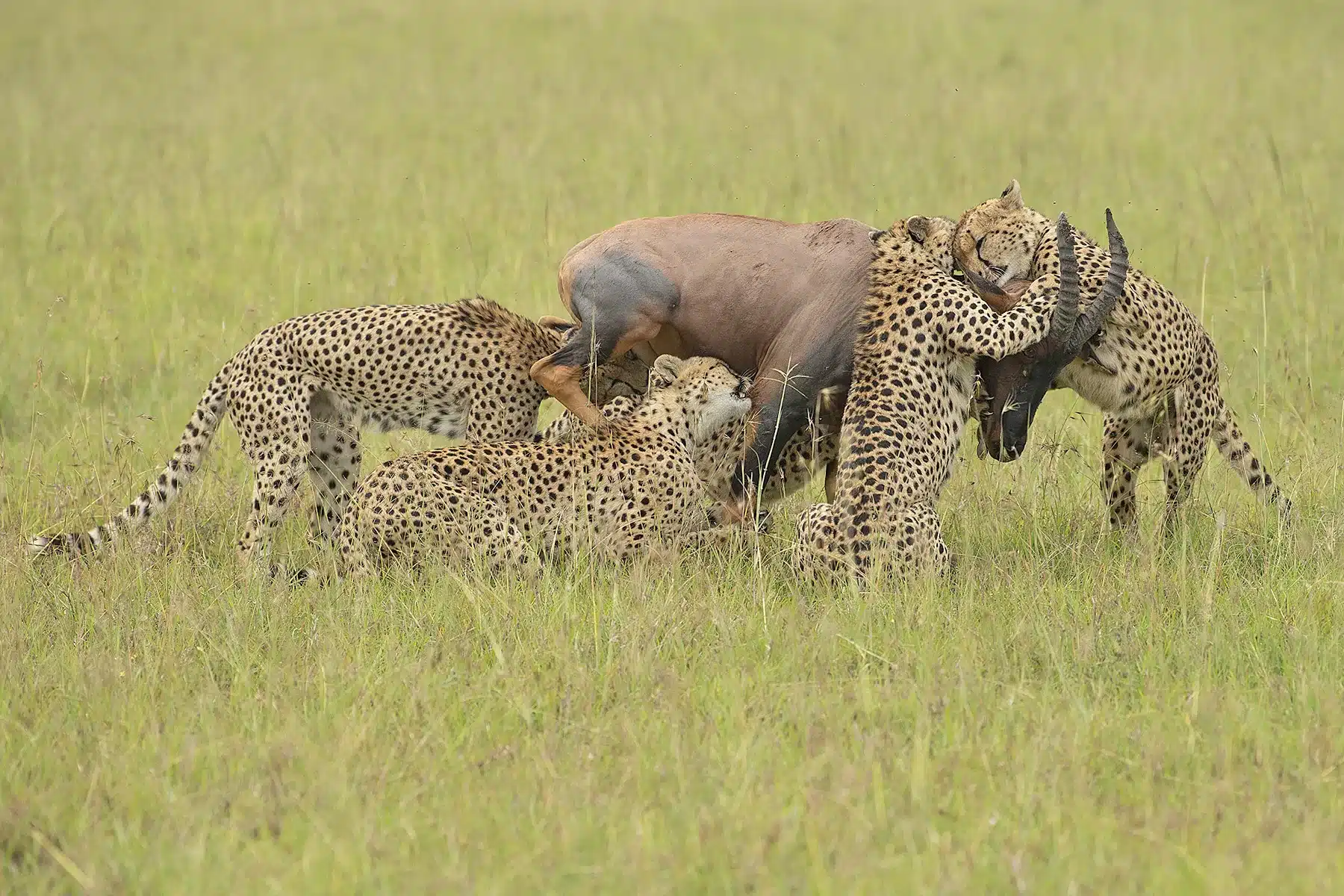
Sometimes, cheetahs hunt solo, relying on their speed and agility. Other times, they team up with fellow members of their coalition, working together to coordinate their movements and corner their prey. It’s a high-stakes game of cat and mouse, with each member of the hunting party playing a crucial role in the chase.
Prey Selection and Hunting Success
Cheetahs are selective hunters, preferring smaller and more quick prey that are easier to catch and control. Gazelles, impalas, and springboks are among their favorite targets, thanks to their speed and their ability to move easily. By focusing on these smaller animals, cheetahs increase their chances of a successful hunt while minimizing the risk of injury or exhaustion.
But hunting success is not guaranteed for cheetahs. They face numerous challenges in the wild, from unpredictable weather conditions to the evasive tactics of their prey. Despite these obstacles, cheetahs have evolved to be highly efficient hunters.
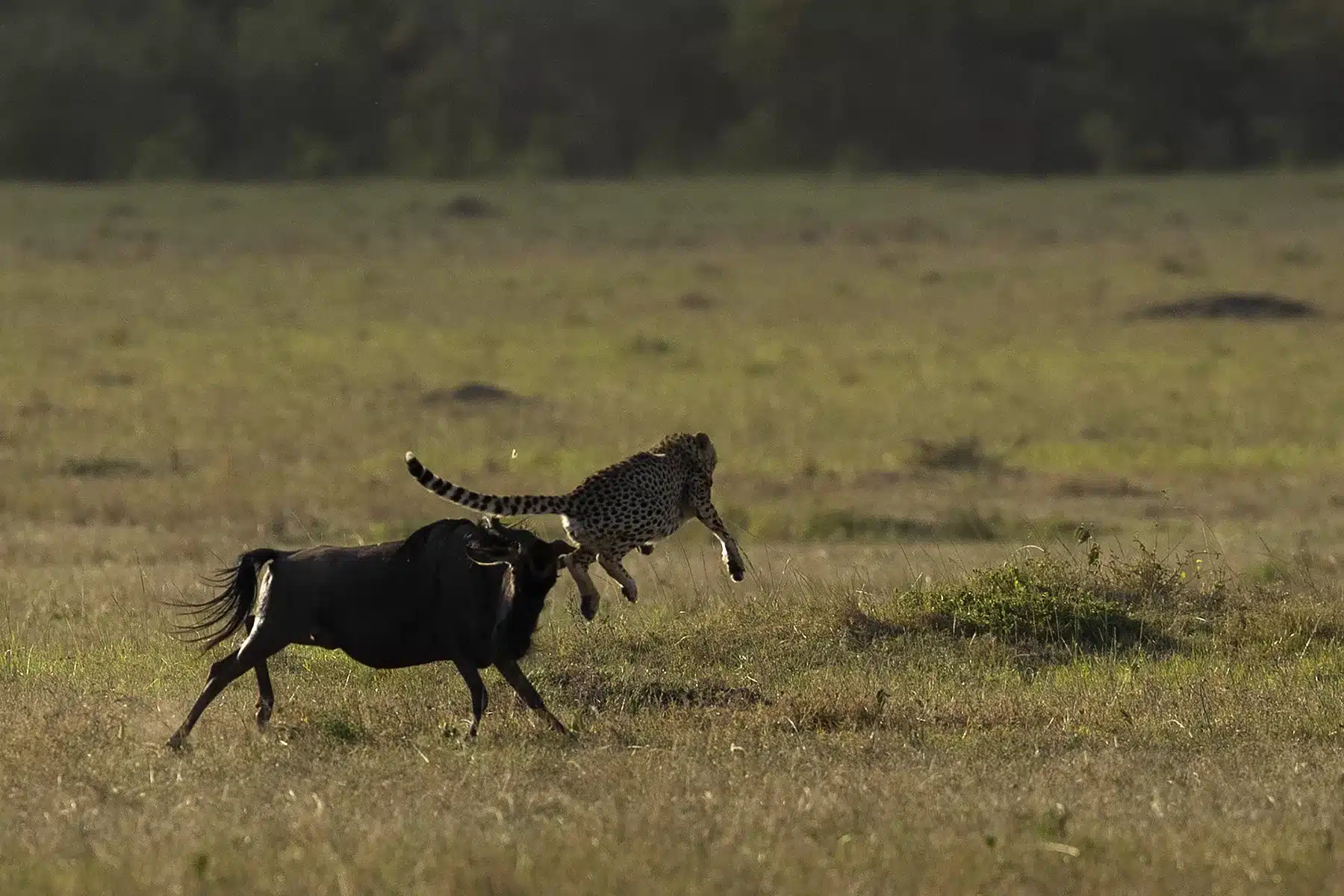
In the end, observing cheetahs in their natural habitat is a humbling experience, reminding us of the beauty and complexity of the natural world. From their lightning-fast sprints to their strategic hunting tactics, these magnificent predators are a living testament to the power of speed and agility in the animal kingdom.
Environmental Factors Affecting Cheetah Speed
Environmental factors play a significant role in influencing cheetah speed and hunting success. Terrain preferences, temperature, and habitat characteristics impact their ability to hunt effectively and maintain their top speeds.
Cheetah’s speed isn’t solely determined by their physical skills; environmental factors also play a significant role in their performance. From the terrain they traverse to the temperature of their surroundings, these elements can greatly impact a cheetah’s ability to reach top speeds.
Terrain Preferences
Cheetahs prefer open grasslands and savannas where they can utilise their speed and run to full advantage. These expansive landscapes allow them to spot prey from a distance and give chase with minimal obstacles.
Impact of Temperature on Performance
Cheetahs are adapted to thrive in warm climates, with their streamlined bodies and efficient cooling systems helping them cope with high temperatures. However, extreme heat can still pose challenges for cheetahs, as excessive heat can lead to dehydration, fatigue, and overheating during prolonged chases.
To mitigate the effects of heat, cheetahs may adjust their hunting behavior, looking for shade and resting during the hottest parts of the day or targeting prey near water sources where they can cool off.
Hunting Success Rates in Different Habitats
Cheetah’s hunting success rates can vary depending on the type of habitat they inhabit. While open grasslands offer ample opportunities for high-speed pursuits, dense vegetation and rugged terrain present challenges that require different hunting strategies.
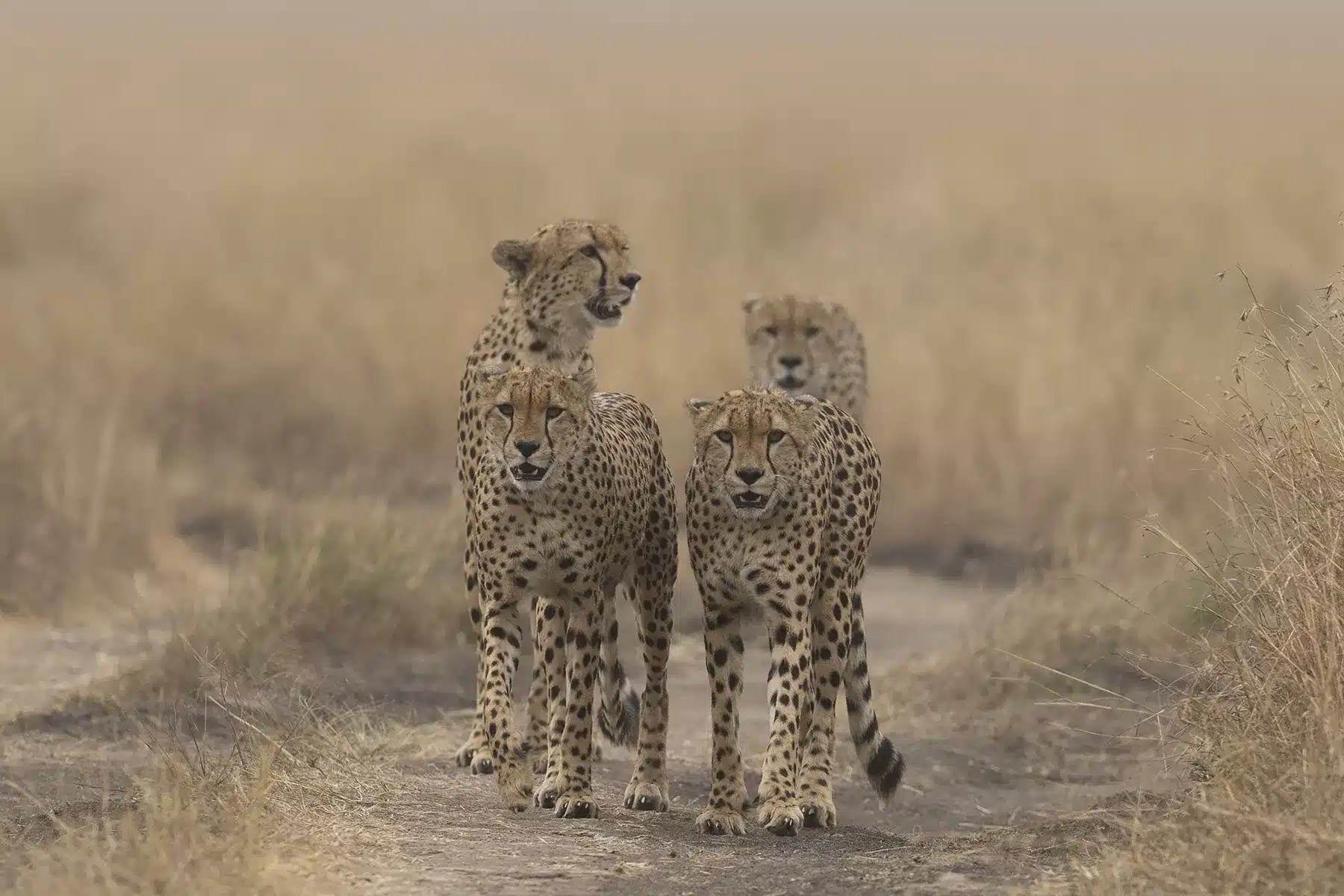
Cheetahs, the speed demons of the savanna, are nature’s ultimate sprinters. With their sleek bodies, powerful muscles, and lightning-fast reflexes, cheetahs are built for one thing: speed. From the moment they burst into action, every muscle of their being dedicates itself to chasing down prey with unmatched agility and grace. Whether they’re sprinting across the open plains or navigating dense vegetation, these apex predators are always one step ahead.
So, if you ever find yourself wondering how do cheetahs run so fast, just remember: it’s all about their unique structure, the way their muscles work, and the sheer determination of these incredible animals. And if you are lucky enough to witness them in action on a cheetah safari, prepare to be spellbound by the beauty and ferocity of nature’s fastest land animal.
If you loved reading this story, then subscribe to our blog here (it will ask to verify your email) to get inspiring travel stories and trivia delivered to your email. Stories about wildlife trivia, cultural experiences, curated luxury hotel lists, underrated places to travel, polar journeys and much more.











